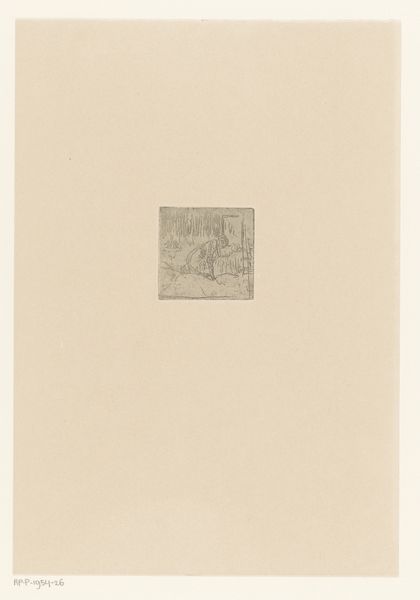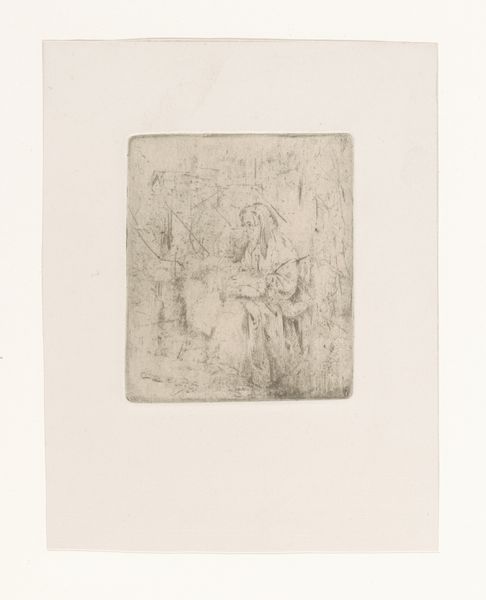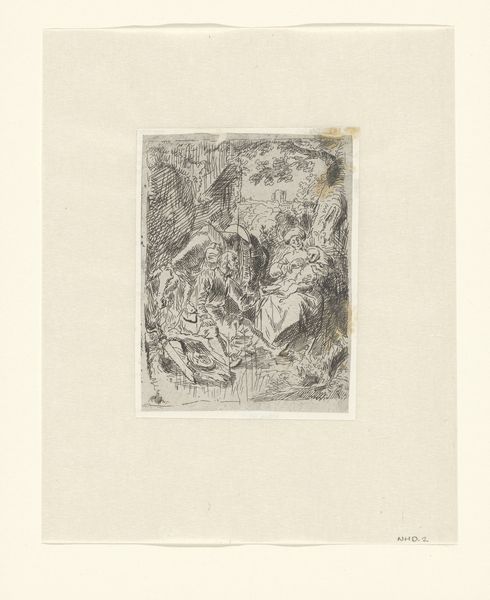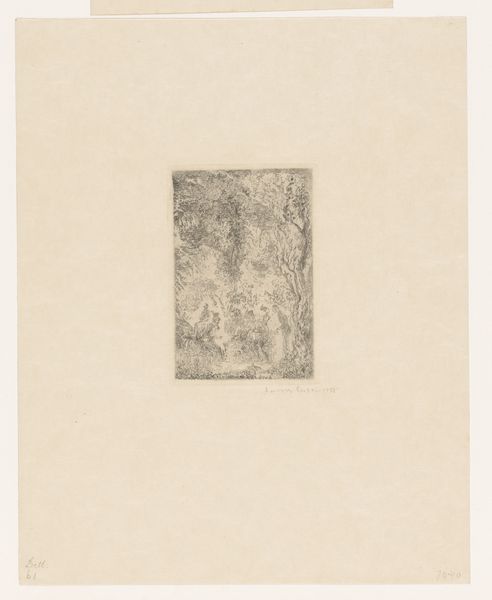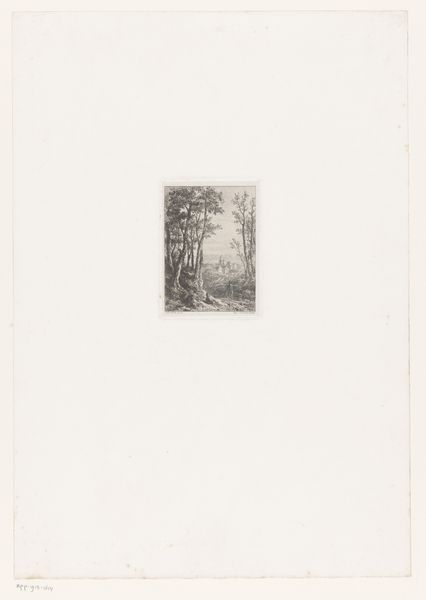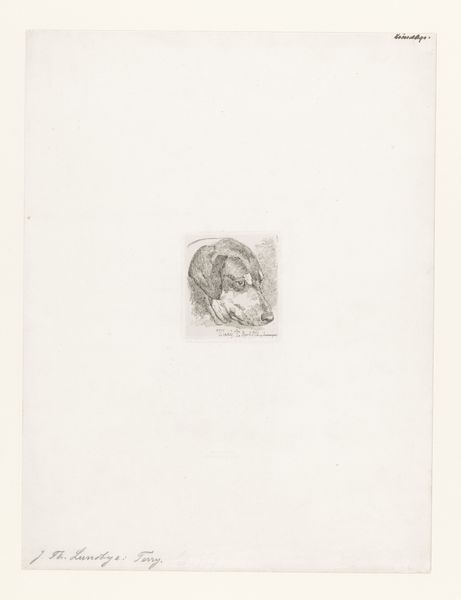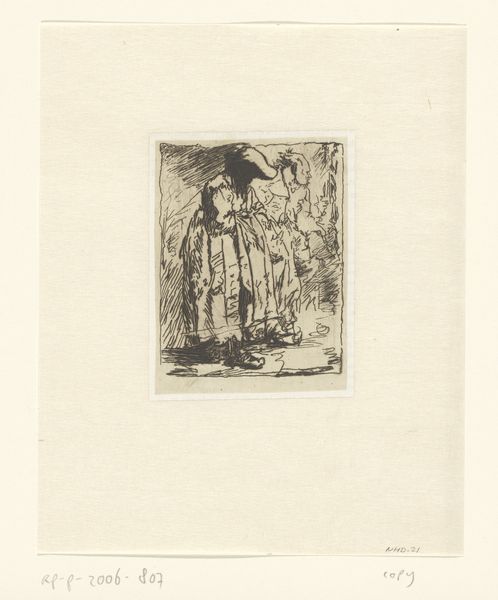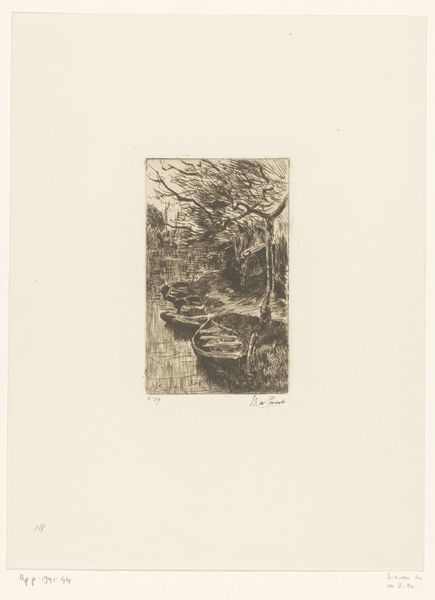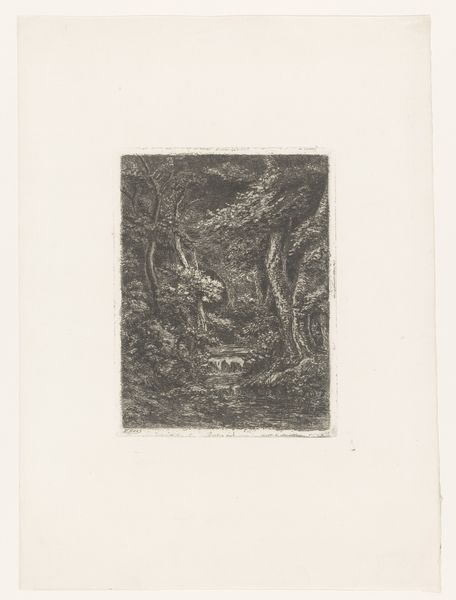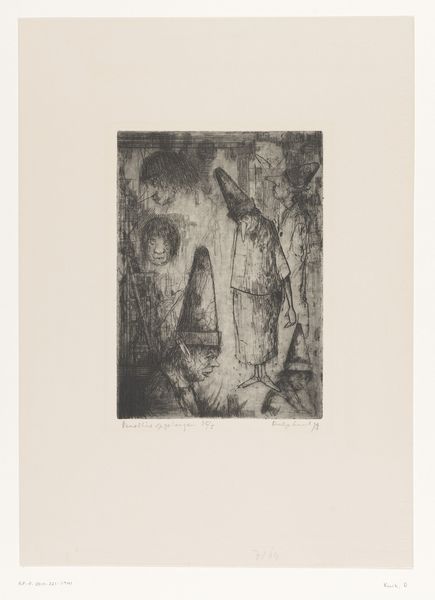
drawing, print, engraving
#
drawing
# print
#
figuration
#
genre-painting
#
northern-renaissance
#
engraving
Dimensions: height 87 mm, width 60 mm
Copyright: Rijks Museum: Open Domain
Melchior Lorck’s etching presents us with a bagpipe player accompanied by a boy, likely made in the 16th century. The bagpipe itself, beyond its musical function, is a symbol deeply entwined with cultural identity. Across Europe, from the Scottish Highlands to the Balkans, the bagpipe’s drone resonates with communal celebrations and solemn rituals, acting as a sonic bridge between generations. In Dutch art of this period, however, the bagpipe can also be associated with rustic, even bawdy, themes, and a sense of revelry. Think of similar instruments in ancient Roman festivals of Bacchus, and you can hear the same raucous undercurrent. Note how the boy looks up at the bagpipe player, perhaps mirroring a transfer of knowledge or tradition, and evoking the powerful link between music, memory, and cultural continuity. These echoes remind us that images are not static, but pulsate with life, carrying within them the hopes, fears, and joys of those who came before us.
Comments
No comments
Be the first to comment and join the conversation on the ultimate creative platform.
